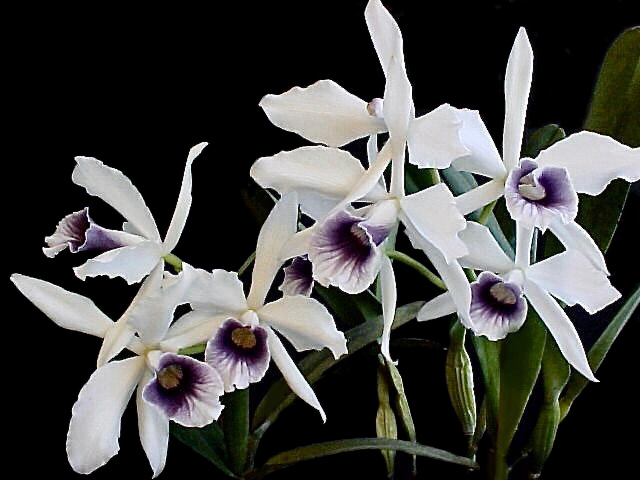Many also call this variety werkhauseri, as they all descend from 3 unique purpurates with this color so far found, one of them being, the first, a plant found by orchidist Karl Werkhäuser near Osório (RS) in 1904.
Later, Karl himself found at Praia do Torto, a place close to where the first one was found, another Laelia purpurata of the same color, with a slightly darker lip, but with a better frame and larger size.
This second he gave the clonal name of 'Superba'.
The first was known only as "First" and sometimes "Superba" is called "Second".
After Karl Werkhäuser's death in 1914, these two legendary cardinals of as-yet-unknown color were locked up by their widow in total cloister, out of sight for nearly 50 years.
Because of this, one of them came to be called “A Joia da Bruxa” (The Witch's Jewel), a fact already widely known in the orchidist world.
A third slate colored purpurata was found in the same region by Walter Dreher and it differed from the previous two in that the vegetative part was shorter and stockier and its flower, although smaller, had the best frame of the three.
This third and last Laelia purpurata slate already found in nature (others were found, but lost), was given the clonal name of 'Sublime', and is also called 'Borba', but I still haven't found the reason for this second name. .
When, after half a century, Karl Werkhäuser's widow, Dona Elvira, agreed to sell a division of this purpurata to a consortium of orchidists, the doors opened for the multiplication and diffusion of this beautiful variety.
It is believed that the widow actually sold only one division of the 'Superba', not knowing for sure which path followed the 'First'.
The first successful cross made with purpurata of this variety was number 1330 ('Superba' x 'Sublime') from Florália (RJ), made by Rolf Altenburg.
From then onwards, numerous crosses between the product of this seedbed were made and today this variety can be considered common and accessible to everyone.
Those in good shape, however, are still rare and disputed and more recently striata have started to appear, with beautiful slate streaks on the petals..
Photo: Carlos Keller |
![]()
![]()
